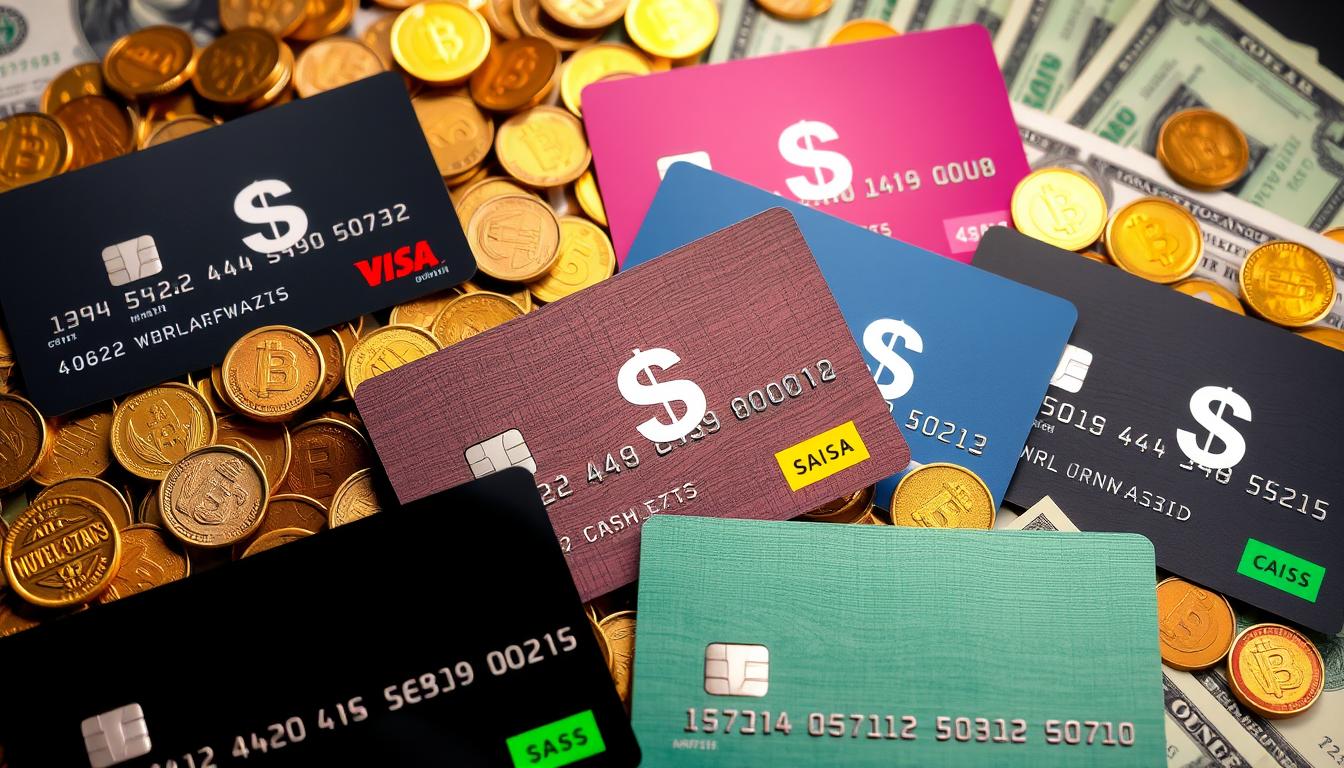Understanding interest rates is key for both consumers and investors, especially for 2025. The US interest rate trends for 2025 will greatly depend on what the Federal Reserve does in response to economic challenges. Changes made by the Federal Reserve affect inflation, spending, and investing.

GBTI Visa Gold Card
As the financial landscape changes, it’s crucial to watch these trends closely. This is important for those wanting to navigate the market effectively.

Anúncios
Overview of US Interest Rate Trends
US interest rates have changed a lot over the years. They show how the economy is doing. As of July 2025, the US Fed Funds Rate is at 4.50%. From 1971 to 2025, the average rate was 5.41%. This information helps us understand current and future economic trends.
Anúncios
Many things cause changes in US interest rates. For example, high inflation often makes the Federal Reserve raise rates. Also, a strong job market can increase consumer spending. This, in turn, might make inflation go up. These factors show how interest rates affect financial stability.
The Federal Reserve says that the impact of tariffs on inflation should be small and short-lived. This tells us that understanding US interest rates is complex. It also helps us think about possible changes in the future.

Current Federal Reserve Policies on Interest Rates
The Federal Reserve’s current interest rate policy greatly impacts the economy. Right now, they’ve set the federal funds rate between 4.25% and 4.50%. This careful decision shows they’re closely watching the economy’s progress and how prices are rising or falling.
At their June 2025 meeting, Fed leaders seemed unsure about lowering rates. They want to better understand the economy first. The big questions come from global issues and changes in trade, making it tough to decide on future interest rates.
To sum it up, the Fed’s approach is all about balance. They’re trying to make smart moves based on what’s happening in the economy and around the world.
Factors Influencing Interest Rate Predictions for 2025
Interest rate forecasts for 2025 depend on key factors like inflation and economic growth. The Federal Reserve aims for a 2% inflation target. Yet, inflation has been above this goal, affecting monetary policy.
Tariffs and fiscal policies could push up product prices. This may change how people spend, guiding the Fed’s decisions on interest rates.
The job market’s health is crucial, too. As the economy recovers, strong job growth shows its strength. Yet, with unemployment at 6.9%, the Fed faces hurdles.
It must foster growth while controlling inflation. Getting this balance right is key to sustainable economy. It greatly impacts how inflation affects interest rates.
Historical Context of Interest Rates
Studying historical interest rates reveals much about the U.S. economy. From 1971 to 2025, the average was 5.41%. In that time, the economy has seen highs and lows in interest rates. These changes have impacted how markets and people behave.
In March 1980, rates hit an amazing 20%. Then, in December 2008, they dropped to 0.25%. These moments are crucial in understanding the Federal Funds Rate history. The early 1980s spikes happened as a fight against high inflation, showing us how policies and the economy are connected.
After the 2008 financial crisis, rates were cut to help the economy recover. This shows how interest rates act as signs of economic health. By knowing these trends, we can better understand today’s interest rate policies.
Projected Interest Rate Levels for 2025
Interest rate predictions for 2025 show what might be ahead in the financial world. Experts think short-term rates could drop to around 4.25%. This possible decrease is tied to how well the economy recovers and inflation is managed. Trading Economics models highlight this. Issues like tariffs and global trade can also impact rates.
Looking ahead, interest rates in the US might become stable. As recovery progresses, the Federal Funds Rate is expected to reach 3.75% by 2026. It might decrease to 3.50% by 2027. These predictions are based on the constant watch of economic signs and Federal Reserve policies.
The Role of Tariffs in Interest Rate Changes
Tariffs have a big impact on U.S. interest rates. They mainly affect rates by influencing inflation and the economy’s health. Government trade policies can change what we pay for things and how our economy does.
Tariffs make imported goods more expensive. This can cause inflation, making the Federal Reserve adjust interest rates. When prices go up, people can’t buy as much. This shows how important it is for the Federal Reserve to be careful with policy changes.
Trade tensions can have serious consequences. They can make it hard for businesses to know their future costs. This might make them invest less. As things change, the Federal Reserve has to think about these issues when setting interest rates. What happens with trade policies will shape future interest rates. It’s key for everyone to keep up with these changes.
Effects of Interest Rate Changes on Borrowing Costs
Interest rates shape borrowing costs in a big way. For home loans, choosing between fixed and variable rates is key. Fixed rates stay the same, making monthly payments predictable. But variable rates can change, showing the direct effect of rate changes on loans. This makes borrowing costs fluctuate, affecting homebuyers’ decisions.
The effect of interest rates reaches various areas, like consumer loans and credit cards. When rates go up, so do the costs of these loans. This means people have to pay more every month. High costs may make people cut back on spending. This can slow down economic growth.
Interest rate changes also affect how people see housing affordability. Choosing between fixed and variable rates requires thinking about future rate changes. With rising rates, getting a fixed mortgage might seem like a better deal to avoid higher costs later.
Comparative Analysis with Other Countries’ Interest Rates
Global interest rates shape national policies, especially in the United States. Comparing these rates shows how economies deal with inflation and economic ups and downs. For instance, Canada and the UK often follow the US’s lead because they face similar issues like consumer spending changes and government fiscal decisions.
International finance is crucial in these matters. Interest rate differences between countries affect how much their currencies are worth, where investments go, and how their economies grow. With the Federal Reserve deciding on its next steps, knowing what’s happening worldwide is crucial. Other nations might use different methods to tackle their economic problems. These decisions can also affect the US economy.
- Countries with lower interest rates may see increased borrowing.
- Those maintaining higher rates could face challenges in economic growth.
- Global interest rates impact capital flows, influencing domestic investments and employment rates.
Conclusion
Looking ahead at future interest rates in the US, we see they’re linked to the economy’s health. Our review shows that inflation, Federal Reserve decisions, and global markets will guide rate changes. This connection highlights why staying up-to-date and flexible is crucial for financial choices.
This report indicates that we should expect ups and downs in how much it costs to borrow money. Such changes can affect buying power and economic growth, impacting everyone. It’s key for managing money, whether for personal or business use, as we move towards 2025.
To sum it up, even though interest rate forecasts are uncertain, current policies and past trends offer valuable insights. Staying flexible to these changes is important for making smart financial decisions as interest rates shift.
FAQ
What are the current interest rates in the United States as of July 2025?
How do inflation trends impact interest rate predictions for 2025?
What are the historical highs and lows of US interest rates?
What is the Federal Reserve’s current stance on interest rate policy?
How do tariffs affect interest rates?
What are the implications of interest rate changes on consumer loans and credit cards?
How do US interest rates compare with other countries?
What are the predicted interest rate levels for 2025?
How do labor market conditions affect interest rates?
Conteúdo criado com auxílio de Inteligência Artificial


